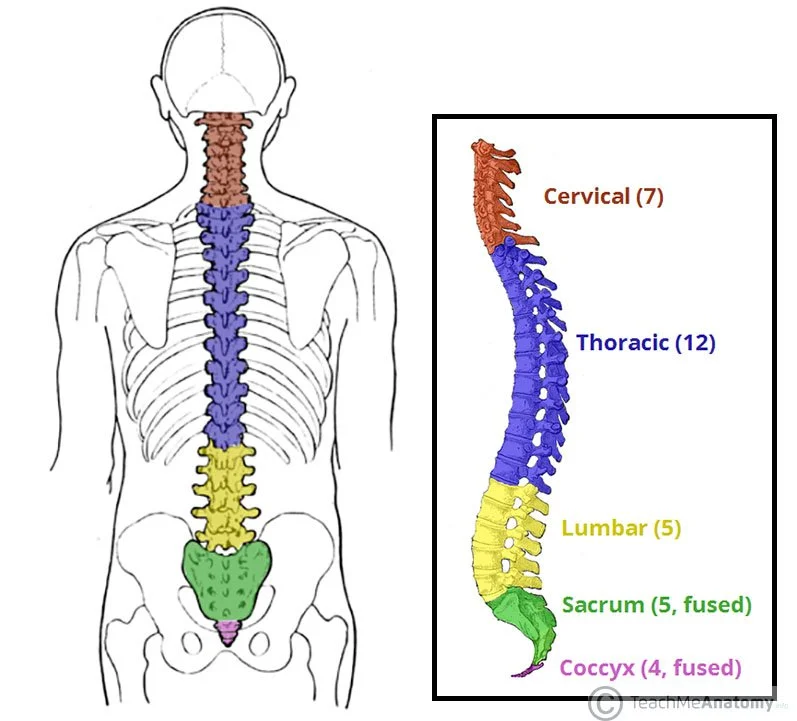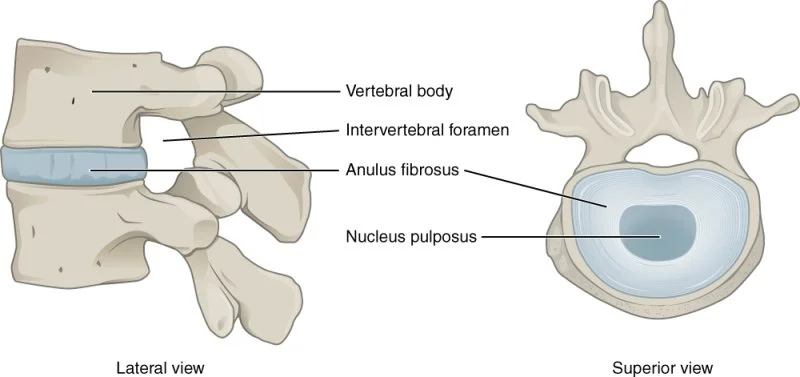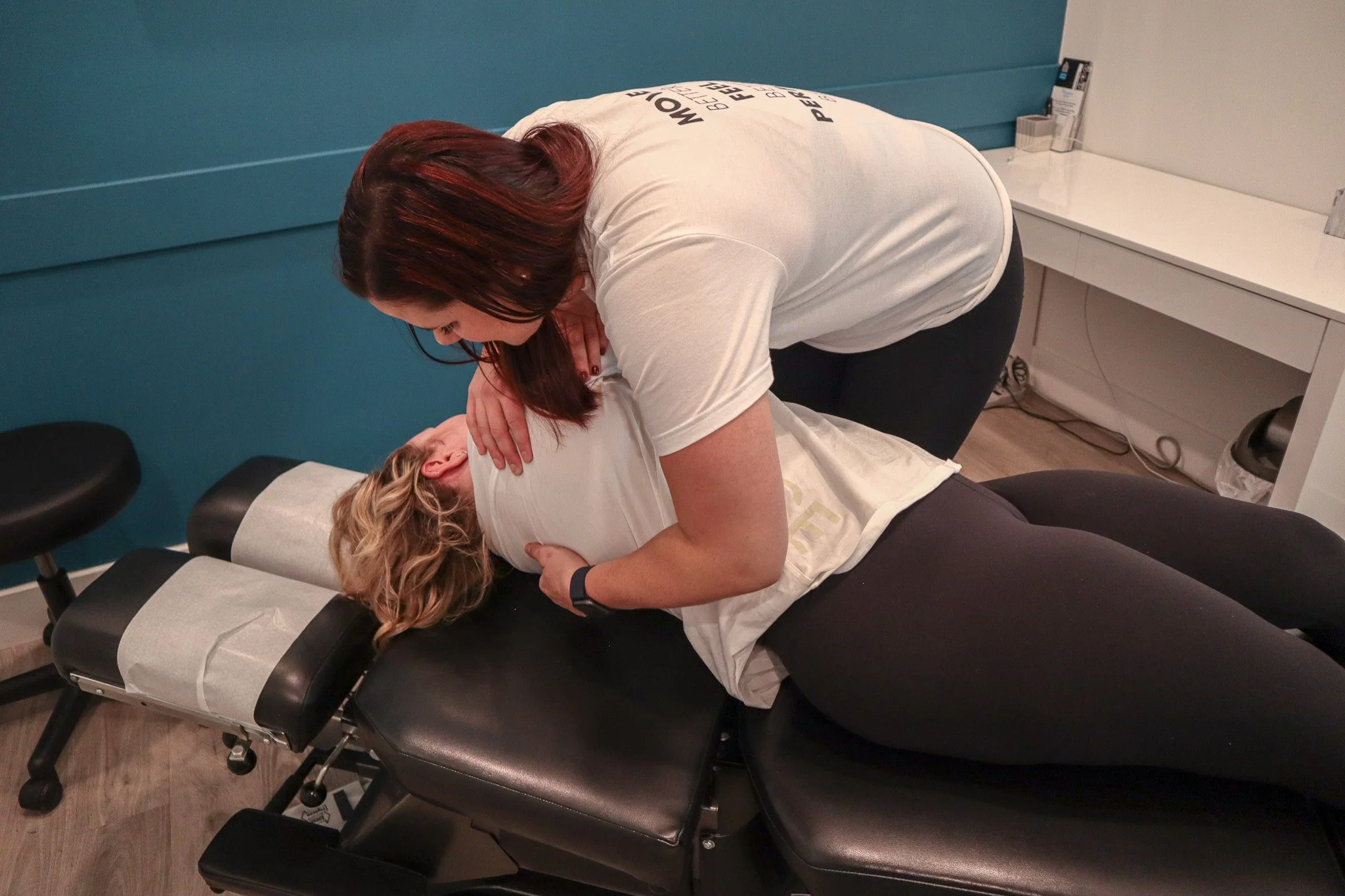The Role of Chiropractic Care in Managing Disc Injuries
Intervertebral Disc Anatomy
Our spine is composed of 7 cervical, 12 thoracic and 5 lumbar vertebrae stacked. In between each of these vertebrae are cartilaginous discs known as intervertebral discs.
Image of the human spine (photo credit to teach me anatomy)
Intervertebral discs do not have a vascular supply and absorb nutrients through osmosis. Each disc comprises two parts the annulus fibrosis and the nucleus pulposus.
Image of a intervertebral disc including the Annulus Fibrosis and the Nucleus Pulposus (photo credit to NLoM)
Annulus fibrosis is the outer layer that surrounds the nucleus pulposus. The annulus enhances the spine's rotational ability and resists compressive forces. The annulus consists of water and collagen fibres in a layered structure. The nucleus pulposus is the center of the disc and is a gel-like substance, and contains more water than the annulus. In combination with the annulus, both parts work to transmit stress between vertebrae.
What is a Disc Bulge or Herniation
An injury to the discs can happen anywhere along the spine. However, lumbar and cervical disc herniations and bulges are more common than thoracic.
A disc bulge is when the outer layer, the annulus fibrosis, protrudes outwards into the spinal canal.
A disc herniation is when the inner layer, the nucleus pulposus, presses out through a tear in the annulus fibrosis. This can result in the nucleus extruding into the spinal canal, intervertebral foramen or on either side of the discs.
While these can be asymptomatic, they can also cause pain and dysfunction. Pain can occur when the disc presses against a spinal nerve, which often makes it challenging to diagnose as the pain is not often in the area of the injured disc.
Symptoms of a disc injury in the neck may include:
Headaches
Arm or shoulder pain
Numbness, tingling or weakness in the arms, fingers, neck or shoulder
Symptoms of a disc injury in the low back may include:
Numbness, tingling or weakness into the legs and toes
Leg pain
Changes in bowel or bladder function
The gold standard for the diagnosis is an MRI; however, a disc injury can also be identified through a thorough exam and an understanding of the injury or symptom history.
Can a Chiropractor Help With Intervertebral Disc Injuries?
As an expert in conservative spine treatment, a chiropractor can help you get back to the activities you love again. At Move RX, Dr. Lauren and Dr. Col will take a thorough history to determine any risk factors for a disc injury and the mechanism of injury and then do a focused orthopedic and neurological exam to determine the diagnosis.
After the analysis, our chiropractors at Move RX will provide treatment to alleviate the pain, including:
Soft tissue therapies
Flexion distraction and adjustments,
Exercises to keep you moving,
Education on the injury, with an analysis of your movement patterns to determine any contributing factors.
During our exam, we take a whole-body approach to identify if another area may be adding stress to an injured area; we will work to mitigate these factors. Many patients with these injuries prefer chiropractic treatment as it is non-invasive and does not involve pharmaceuticals. In addition, chiropractic treatment is safe and effective management of a disc injury.
Looking For More Information About Chiropractic Topics?
Learn more about our Kelowna Clinic here.
View our main Chiropractor page here.
How a Chiropractor Sleeps: The Secret to Sleeping Properly (learn how to get the best sleep for your body)



